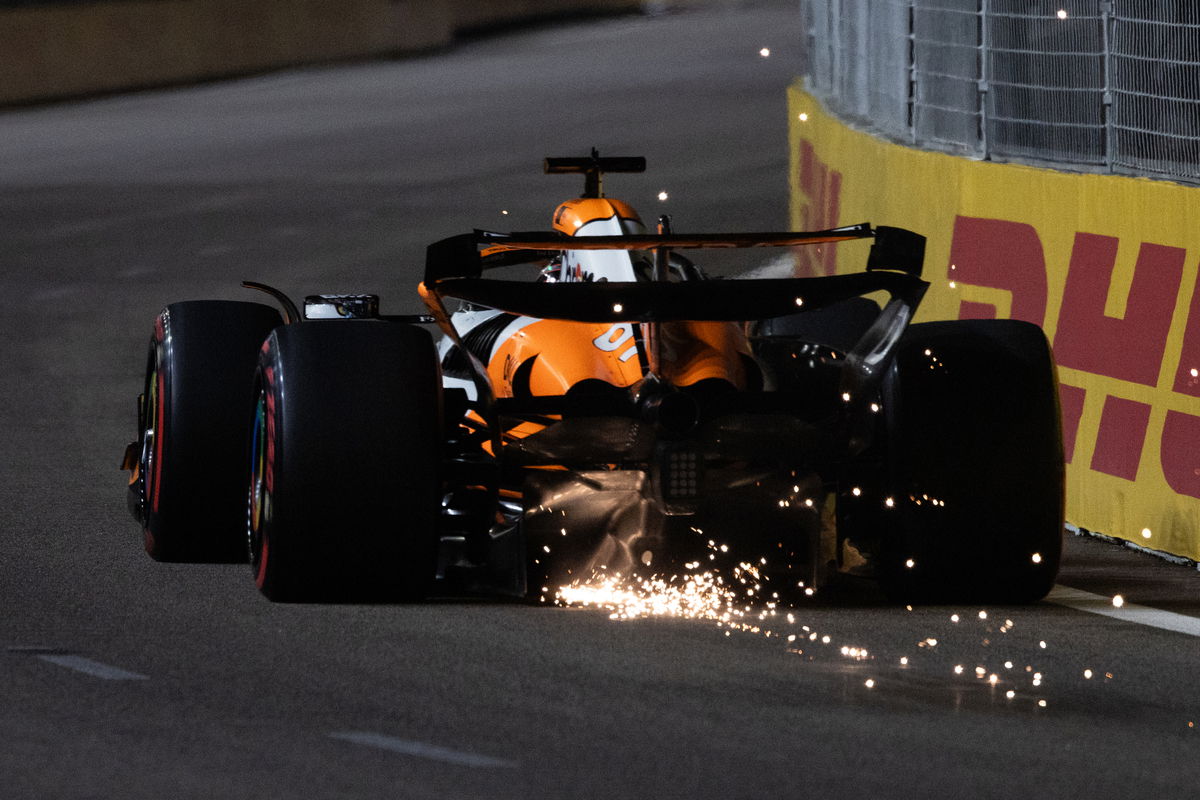

Following last weekend’s Azerbaijan Grand Prix, McLaren’s rear wing come under scrutiny after it appeared to flex in an unusual manner under load.
Specifically, the top flap appeared to open marginally under load, creating what has been dubbed a ‘mini DRS’.
Though the wing met all regulatory requirements, conversations in the Singapore paddock have seen a reassessment of the interpretation which allowed the solution.
That followed intense lobbying, predominantly through the media, while Red Bull Racing is known to have had conversations with FIA single-seater boss Nikolas Tombazis.
“I find that so much attention on our rear wing is just good news, because it means that opponents are not focusing on themselves,” Stella reasoned.
“Formula 1 is such a marginal thing, it’s so complicated, I keep repeating to my team: focus on yourself.
“So for me, when I see that there’s so much attention from other teams, it means that they will be doing work, they will be doing analysis, they will be talking to the FIA.
“There’s limited time and limited energy; they’re using this time and energy to chase something that I think is a red herring.
“So for me, as McLaren, that’s just good news.”
More on McLaren
👉 Why did McLaren change its wing?
👉 McLaren changes flexi-wing after FIA request
👉 Punchy Piastri hits out at McLaren rear wing claims
Ironically, the rear wing used in Azerbaijan a week ago is not in use this weekend, making a moot point in Singapore.
Even still, Lando Norris qualified on pole by two-tenths over his title rival, Max Verstappen.
Still, the squad acknowledged that it will make changes to the offending part, a pragmatic response in the heat of a championship battle.
But the team hopes the attention the FIA has paid its wing is reciprocated with its rivals, with Stella suggesting they have similar exploits.
“Making changes is pretty much transparent, so we may as well do it,” the McLaren boss reasoned.
“It won’t be a big consequence for our performance.
“We also do some due diligence in terms of studying other people,” he added.
“We don’t want to spend so much energy and time with journalists and trying to create big stories, we just told the FIA what we think is happening.
“We trust, and we are confident that they will talk to the other teams and make sure that they fix their own issues, which may be less visible, but definitely they do exist.”
Conversations with the FIA over technical matters are not uncommon, and a host of technical directives exist that teams must adhere to in addition to the published technical regulations.
It is not uncommon for the FIA to ask for changes to a component that may exist in a grey area, or be open to interpretation, though those conversations typically happen well away from the media spotlight.
“We do trust the FIA,” Stella asserted.
“They are very competent people from a technical point of view.
“When we have conversations with them, not only do we see that they understand mechanism, but they also understand what is going on with, in this case, our competitors.
“They always seem to be pretty equipped in terms of understanding whether some of the tests are suitable to limit some, let’s say, mechanisms or ways of using aerodynamic pressure.
“I think we are in debt from a policy point of view with the FIA.
“And I think we should have all, all parties, teams, journalists, everyone, a little bit more respect for the FIA and the technical department because they do a very good job.”






















Discussion about this post